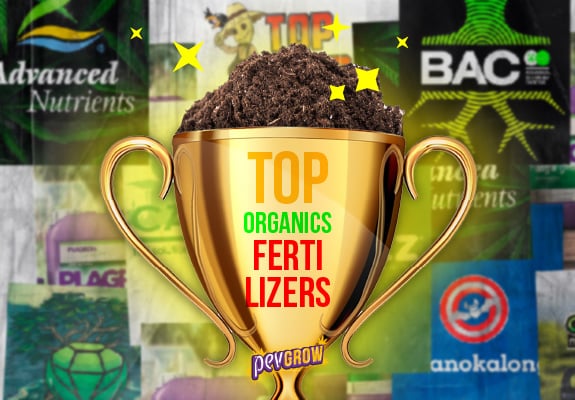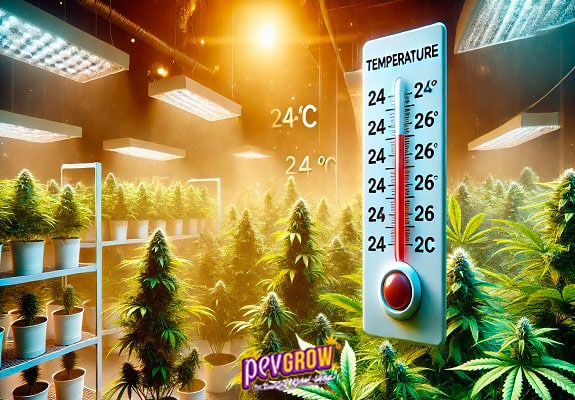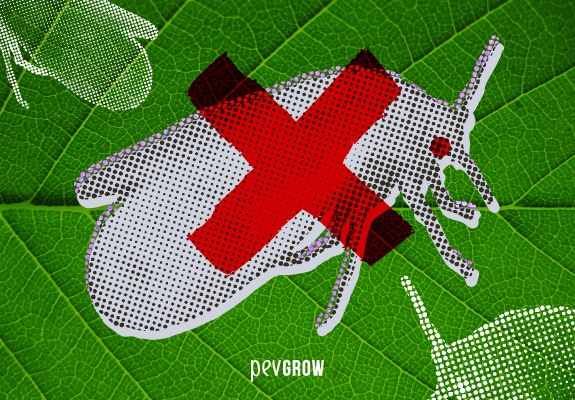

In constant struggle for the regulation of cannabis, mainly in the medicinal field.
31-05-2019 10:00:27 - Updated: 31 May, 2019
After the endless hours of tending your marijuana crop, you stop to inspect one of your plants that seem to grow slower than the rest. It looks like it’s in shock: its leaves are not pointed up towards the sky as though it’s praying to the light. Instead, the leaves look droopy, and there are small markings on the leaves.
The more you inspect, the more you think its some kind of nutrient deficiency because of the discoloration on the leaves. Alas, you look under the leaves and see something no cannabis grower should see: Whiteflies.
Join us as we learn about one of cannabis’s most disdained enemy, the Whitefly. To defeat this formidable pest, you’ll need to arm yourself with knowledge on its background, what works against it, and how to ultimately prevent them from infecting your cannabis garden. ?
⚠️ The Basics of Whiteflies
Whiteflies are small flying insects that feed on the underside of leaves. Their size is generally 1-2mm, which makes them hard to spot at first. Interestingly, Whiteflies are always female unless a female mates with one of their own offspring. This allows the cycle to continue by introducing more males to mate with females..
The female lays its eggs on the underside of leaves. These eggs have 4 instars, which is 4 developmental stages. Each of these stages requires the Whitefly to remain attached to the leaf with its mouth to continue feeding. These instars don’t have legs, so they’re forced to stay put and feast on your precious weed plant.

? Where To Find Whiteflies?
You already know where to find them: under the leaves. There is more to just understanding where to see them in general because they aren’t always there. You’ll need to search the entire plant regularly to rest assured that your cannabis crop is safe from the troubles that Whiteflies cause in the garden.
Make sure you always inspect new leaves, especially where the petiole meets the stem. These are popular spots to find Whiteflies, as it’s good cover for them. Another good area to inspect is the stem itself.
Sometimes it’s not the Whiteflies you find first- it’s ants. That’s right, you heard it right, I said ants. Ants are a clear indicator, and if you follow them, you’ll find Whiteflies. The reason ants know where to find the Whiteflies is because Whiteflies produce sticky and sweet nectar that ants can’t resist. It’s a symbiotic relationship between the two, where one feeds in return for protection.
Sometimes you won’t find the adults, and instead, you’ll only see the Whitefly larvae. These are even smaller than the adults, so you’ll need a magnifying glass ( HERE Microscopes and magnifiers) to really do a thorough inspection. These tiny eggs like to get deposited on the underside of leaves near the veins that act as a protective ridge.
Other times you won’t find Whiteflies on your plant, you’ll see them flying near your light. It’s important always to be aware in your grow room since Whiteflies can be lurking anywhere at any time
? Disease Vectors
This is a term you should be worried about. The world’s entire agricultural system is terrified of these two words, and you should take note. Disease vectors are animals that carry the disease without ever being infected. Rather than being affected, vectors act as disease transmitters. Some examples are rodents, Asian Citrus Psyllid, mosquitos, and many more. Sadly for us, Whiteflies are also disease vectors.
This leaves us with a lot on our plate in terms of having to deal with such a dangerous foe. One small bite for an infected Whitefly and you may end up with mosaic virus, mottle virus, or leaf curl virus. Just like the name implies, there isn’t a cure for a virus. Once your plant becomes noticeably infected with a virus, you’ll have to cull your cannabis crops.
Look at other examples of the extent of damage done by insects that carry harmful disease:
The Asian Citrus Psyllid has single-handedly put the citrus industry in the US (California and Florida) at a standstill until agricultural inspectors could figure a way to combat the small insect. The billion dollar industry of citrus suffered significant downtime, lost trees, and upgraded protocols. This is the extent of damage that a small winged animal can wreak if growers remain unaware.
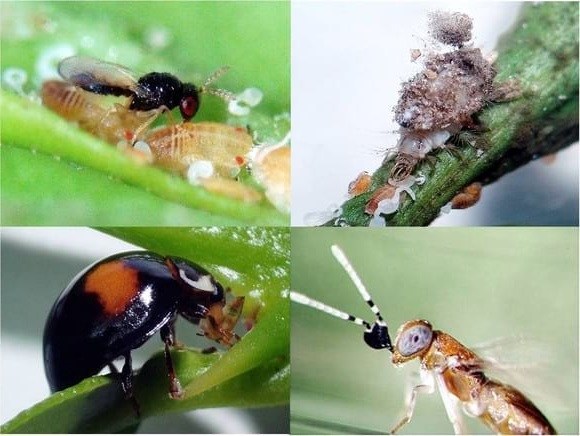
You may be thinking: how can I even stand up against Whiteflies? I’ve felt that too, but at least you have this guide to help you keep your garden safe and healthy. The only way to effectively combat a disease vector is to understand how it operates.
✨ What Attracts Whiteflies?
Your cannabis plants attract Whiteflies! It’s not that they are seeking the same “buzz” as you, they’re actually looking for something much simpler: food. Just like you and me, they are trying to survive, and this leads them to go straight for your prized marijuana leaves.
Whiteflies are attracted to leaves because this is where they’ve naturally adapted to lay their eggs. This reason is twofold: They are able to feed and protect their larvae simultaneously. Even more advantageous is the fact that the eggs will develop with immediate access to a consistent food source.
? What Does Whiteflies Affect?
Whiteflies affect the entire plant because everything is connected. If the roots are affected, the rest of the plant will follow. In this case, the leaves are the main part of the plant that shows signs of stress. It’s after this initial disruption that the rest of the plant begins to show signs of overall stress.
Whiteflies congregate en mass and hundreds of them can quickly destroy a single plant within a week. The leaves will rapidly show signs of being nibbled at, with discoloration, and small random markings.
Since it’s the leaves that are being eaten, this means less surface area for your cannabis plants to photosynthesize and create their own food. Without food, your plants lack energy, and without energy, they are unable to grow. It’s a vicious cycle, and your plant will ultimately lose if no action is taken to stop Whiteflies.
Even further, Whiteflies eat through the phloem of cannabis leaves. Phloem is directly responsible for the transportation of food that is produced through the photosynthesis process. This further complicates the problem as your cannabis plants will be hampered in transporting lowered levels of food. Photosynthesis and food transport are the mechanisms that allow your marijuana plants to survive, and without these, they will rapidly die.
Once your plant becomes the host to a community of Whiteflies, you’ll notice a rapid decline in your cannabis plant’s overall health. The growth will generally become stunted, and the leaves will look lackluster
Another aspect of the plant that is dramatically hampered is bud production. Buds need the entire plant to photosynthesize all the light it’s receiving. Through the process of photosynthesis, plant food is created and then transported via the phloem. If these two processes are disabled due to Whiteflies feeding habits, then bud production will cease. This is the last thing you want to see after months of plant growth and flower production.
✅ How to Get Rid of Whiteflies?
First, I’ll talk about the number one method in controlling Whitefly outbreaks: prevention. Prevention is a cannabis growers’ number one method in curbing any kind of outbreak. Prevention is the method that focuses on doing preventative measures not to get Whiteflies in the first place.
An example of a preventative measure is inspecting clones ? that you may be purchasing for your upcoming cannabis operation. This means that your clone source is trusted and runs a sterile operation. A sterile operation means that the clone distributor keeps his/her environment in top condition to not allow a hot and humid climate where Whiteflies thrive.
Another example of prevention is by spraying your cannabis garden with an eco-friendly oil, such as neem oil. By spraying before any Whiteflies exist in your garden, you are pre-emptively coating your plant’s leaves in a deterrent, so Whiteflies automatically sense an inhospitable environment.
Prevention can also include keeping your grow space clean and organized. This cleanliness and organization don’t allow any hiding spaces for Whiteflies to hide. Making sure to wipe any mess that’s caused by water or soil, and to always, wear clean clothes into your grow operation.
Non-preventative measures include sprays. Here at PevGrow, we don’t advocate the use of harmful synthetic pesticides. This damages the environment too much and is detrimental to yourself, family, and friends. It’s best to use only eco-friendly products, such as neem and other essential oils such as rosemary.
Oils are excellent for getting rid of the Whitefly larvae cycle because they smother the eggs and don’t allow them to feed. By targeting a specific generation within the Whitefly lifecycle, you effectively destroy their ability to continue reproducing; thus, slowly but surely winning the war against them.
Other useful methods in combating Whiteflies are the use of sticky traps (HERE Insect traps selection). This simple and cost-effective method of trapping adult whiteflies is perfect for using within indoor cannabis gardens. Adult Whiteflies are attracted to the bright color and will fly towards it, hoping for a meal. Instead, they’ll become stuck and unable to reproduce.
The key factor in slowing down a Whitefly outbreak is the reproduction cycle. The above methods are perfect for getting rid of Whiteflies, but I can always say prevention is priceless compared the amount of time and money spent trying to battle these small adversaries.
Another useful method in prevention is making sure your surrounding area (neighborhood) is not a haven for Whiteflies. This can be determined by taking a stroll around the area and looking at the underside of leaves on trees and shrubs. Always remember, what you’ll find outside can be found inside.
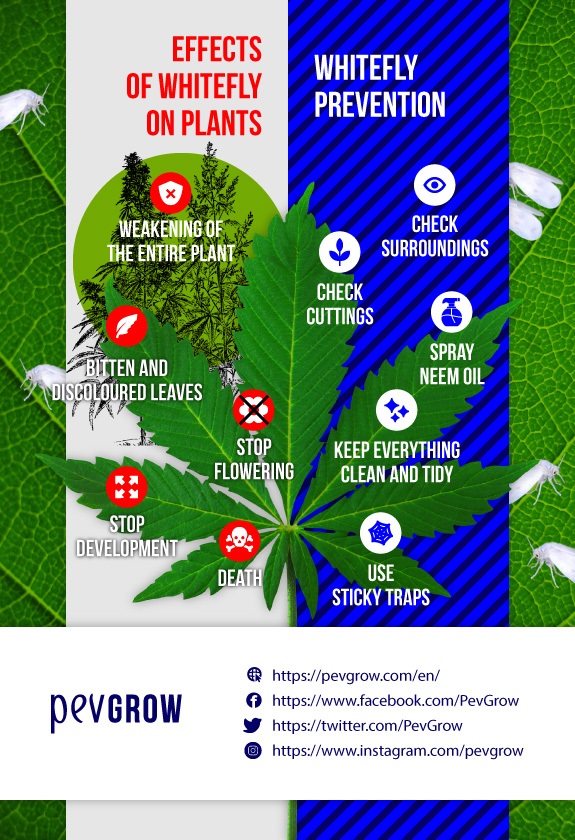
? How Long Do You Have to Wait For Results?
This is a tricky question to answer. All outbreaks vary in degree, and a small outbreak of Whiteflies can clear up in a matter of days. A massive epidemic can take upwards of weeks to entirely clear.
You should be inspecting the underside of all leaves every day. ? You’ll need to monitor your progress through visual inspection. Next, you’ll need to spot spray zones where Whiteflies are still producing eggs.
⛳ Conclusion
Now that you have a clear understanding of Whiteflies, you’re equipped to defend your cannabis garden against these extremely invasive pests.?
You know what Whiteflies look like, how they act, where they feed, and how to best control them. You’ve learned indispensable information, and we hope you never have to use it. Of course, not all of us are so lucky never to have an outbreak of Whiteflies.
Growing cannabis is a learning experience. Who would have thought you’d become an entomologist in the process of producing marijuana? You must be adaptive to a changing environment went growing cannabis because many pests are attracted to weed. Just like all agricultural crops, cannabis has a wide range of insects that can’t get enough of it.



